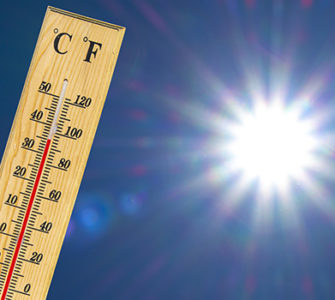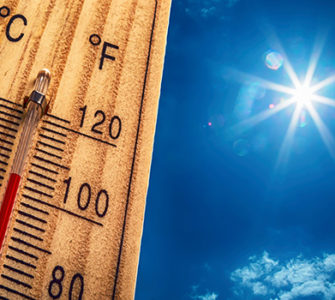Measuring temperature of birds’ faces could help identify heat stress in flocks
Use of thermal imaging cameras to measure facial temperatures may offer a non-invasive option for assessing heat stress in commercial broilers, according to research from the University of Arkansas.
“We have been doing heat stress research for many years, and specifically we have been looking at mitigating heat stress using different cooling strategies. While we were doing it, we have tried using core temperature measurements, basically putting sensors into the birds, or we do rectal temperatures using thermometers,” explained associate professor Yi Liang, PhD, who led the project.
“Either method can be labor intensive or invasive, so we’ve just been looking for better ways of no intrusion, less time-consuming and can still represent the heat-status level of the birds.”
Thermal images help reveal core body temperatures
The latest work of Liang and her team involves measuring the facial temperatures of birds in three commercial broiler houses using thermal imaging cameras. The work is part of a broader project looking at exploring different cooling methods, in pursuit of less water-intensive options for use in the summer months.
Temperature measurements were taken once a week after the third week following flock establishment, using both thermal imaging and rectal probes, and the researchers found that facial temperatures were correlated both to the temperature in the rooms and the core body temperature of the birds.
Despite this result, only the correct application of technologies will allow for a complete picture of temperature issues in production, Liang cautioned.
“When you opt to use the facial temperature measurement to determine the heat stress level of the birds, taking facial temperature only using a thermal camera or thermal gun is not sufficient. You still need to take the house temperature simultaneously,” she said.
An added positive from sustainable cooling research
The work could ultimately result in not only a smarter way to assess broiler welfare during periods of high temperature but also more sustainable cooling in production houses.
All the houses were tunnel ventilated, but different cooling approaches were used in each, Liang explained. Although all the houses had evaporative cooling pads, they were fully employed in only one house. In another, a sprinkler or surface-wetting system was used instead, while in the third, a mix of the two approaches was employed.
“The surface-wetting system is definitely more sustainable than the conventional evaporative cooling system, with reduced water usage up to 50% or 60%,” she added.
Posted on November 8, 2021

















